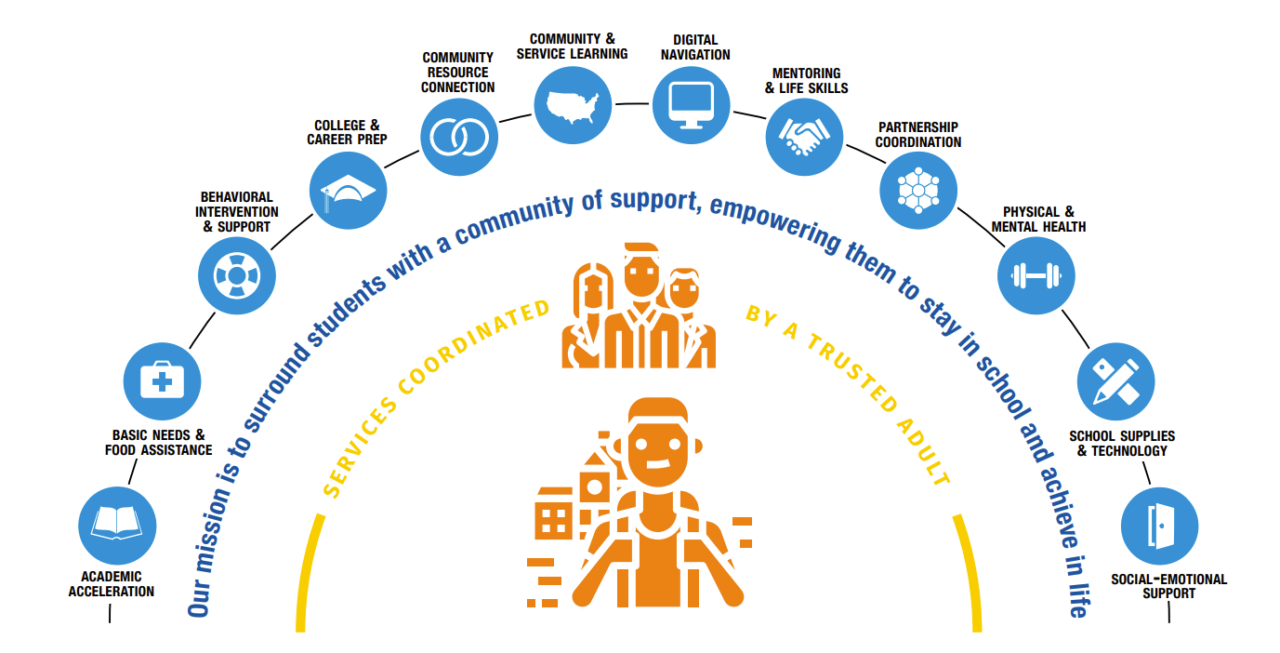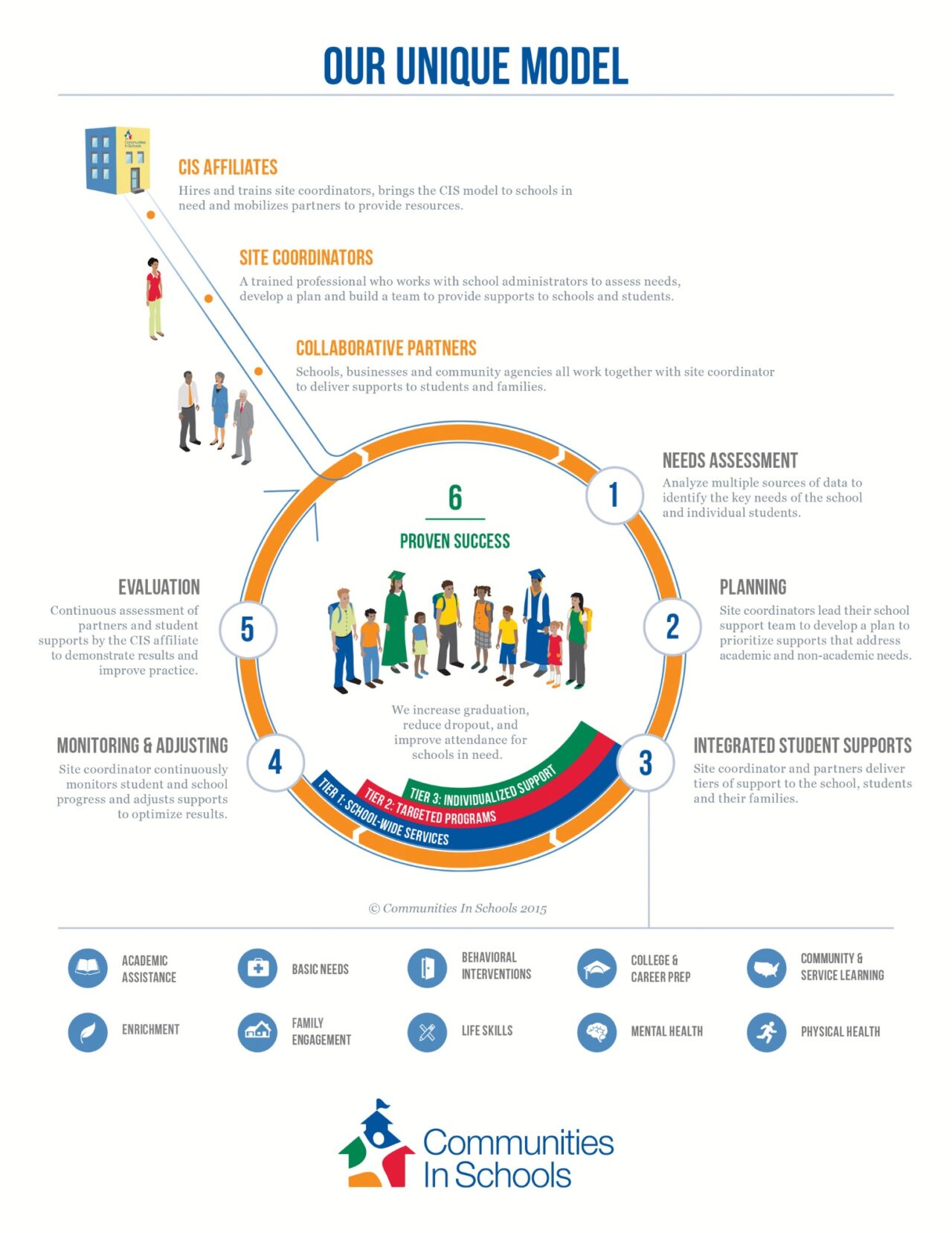Our Approach To Student Success
Transforming student lives, Communities In Schools of Whatcom-Skagit (CISWS) leverages data to identify student needs and tailor evidence-based support. Partnering with 6 School Districts and 15 Schools, this approach empowers students with access to supportive adults and essential community resources. The result? Students achieve academic success, reach their full potential, and thrive in their surroundings.
The Foundation: Integrated Student Supports
Our Communities In Schools® (CIS®) model goes beyond traditional approaches. It’s a comprehensive framework called Integrated Student Supports (ISS). This system ensures we:
- Identify student strengths and challenges: We take a holistic view, understanding each student’s unique needs.
- Target the right support: We connect students with the resources they need most, fostering academic success and overall well-being.
- Empower students to thrive: By removing barriers and surrounding students with a caring community, we help them reach their full potential.
The CIS model provides a strong foundation, but we know every community is different. That’s why we emphasize flexibility. We work closely with local partners to ensure resources and support are tailored to the unique needs of each student and community.
It’s Simple, Yet Powerful: Surrounding students with a support system
Imagine surrounding every student with a network of caring adults, essential resources, and opportunities to learn and grow. That’s the core idea behind Integrated Student Supports. Regardless of background, every student deserves a chance to succeed. Our ISS model makes that happen, providing the tools and support needed to thrive in school and beyond.

Core Student Supports
Individualized Student Supports (Case-Managed): School-based site coordinators empower students to stay in school through individualized access to needed resources, and ongoing encouragement and guidance to build confidence to reach their potential and achieve their dreams.
Academic Assistance and Virtual Programming: Connecting community volunteers with youth who may need additional academic tools and support.
College and Career Prep: Helping young people identify their vision for the future and providing motivation to overcome difficult circumstances.
Enrichment: Providing safe spaces for youth to learn and understand what the world has to offer and help inform their choices.
Family Engagement: Helping parents access the resources they need to provide a supportive home life for their children.
Basic Needs and Food Assistance: Coordinating basic needs like food, healthcare, technology, and school supplies so students can be prepared to learn and engage in school.
Community Resource Connection: Ensuring students have equitable access to physical, dental, vision, and mental health services regardless of ability to pay.
Social-Emotional Support: Identifying and addressing the underlying causes of student behavior and helping students to make positive interpersonal choices.
Mentoring and Life Skills Ensuring that students have support and guidance to instill the confidence to succeed in school and in life.
Our Unique Model
Our Communities In Schools of Whatcom-Skagit network collaborates with community partners to ensure that every student has an equitable path to education, community resources, and tools they need to unlock their potential and thrive. Working inside schools and across communities, our student-centered model of Integrated Student Supports helps create equitable conditions for student learning and targets whole school impact.
The Communities In Schools® (CIS®) Whole School Support model is a comprehensive approach designed to surround students with a network of support and remove barriers to their academic success.

Tiers Of Support
Tier I supports are designed for schoolwide impact—not just impact on our case-managed students. They’re designed to affect the school climate and have an impact on the whole school population. Research Suggest that Tier I supports should:
- Reach a minimum of 75% of the students at the school.
- Be offered at least 4 times a year to achieve the schoolwide goal.
Tier II supports are aimed at groups of students with a common need. Typically, these groups are made up of case-managed students, and designed to help those students meet the individual goals in their school support plans, aligned with the schoolwide goal. Students usually participate in Tier II supports on a regular basis for a sustained period of time.
Tier III supports are for our case managed students. We set individual goals with these students aligned with individual student needs and the schoolwide goal. Tier III supports are intensive, designed for the one-on-one setting, and targeted at highly specific needs.
